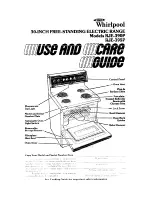
PELLET STOVES
Chapter 3
INSTALLATION AND USE MANUAL
page
28
Installation and assembly
Technical service - Rights reserved MCZ S.p.A. - Reproduction prohibited
3.4.1.
Connections to the system
Make the connections to the corresponding fittings shown in the
diagram on the previous page. Make sure the pipes are not placed
under tension or undersized.
IMPORTANT
IT IS STRONGLY RECOMMENDED TO WASH THE
ENTIRE SYSTEM BEFORE CONNECTING IT IN ORDER
TO GET RID OF RESIDUES AND DEPOSITS.
Upstream from the stove, always install shutters so
as to disconnect it from the plumbing system should
it be necessary to move it, or when it requires
routine and/or special maintenance.
Connect the stove using hoses so that the stove is
not too strictly connected to the system, and to allow
slight movements.
The pressure discharge pipe should be tentatively
placed in a pitcher or funnel to keep water from
wetting the floor or the structure in the event of
excessive pressure.
3.4.2.
System filling
To fill the system, the stove is equipped with a tap
(D)
, with a non-
return valve, for manual filling of the heating system. During this
operation, any air in the system is released by the automatic vent valve
at the upper left of the boiler body (under the ceramic top).
To ensure the valve vents correctly, it is advisable to loosen the grey
cap one turn and to keep the red cap blocked
(see figure)
The filling pressure of the system
WHEN COLD
must be
1 bar.
During operation, if the system pressure drops (due to evaporation of
dissolved gases in the water) to values lower than the minimum
indicated above, the user must use the filling valve to bring the
pressure back up to its normal pressure.
For proper operation of the stove
WHEN HOT
, the pressure in the
boiler must be
1.5 bar
.
To monitor the pressure of the system, install down the line
from the bibcock (D) a pressure gauge with a scale of 0-5 bar.
This is to be done by the installer.
Upon completion of this operation,
always
close the tap.
3.4.3.
Water characteristics
The characteristics of the water used to fill the system are very
important to prevent the build-up of mineral salts and the formation of
incrustations along the pipes, in the boiler and in the heat exchangers
(especially plate heat exchangers for the heating of domestic water -
see chapter 4.13)
Therefore, please GET YOUR PLUMBER'S ADVICE
CONCERNING:
Filling tap (D)
C
D
E
Pressure discharge pipe (3 bar)
Grey plug loosened
1 turn
Red plug blocked
















































